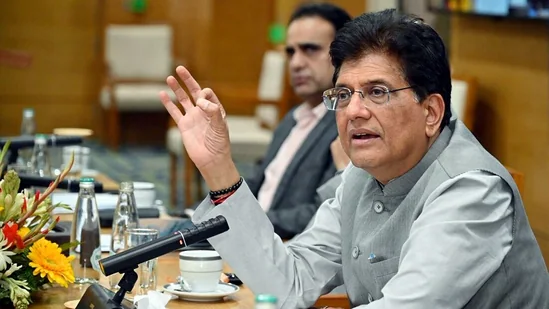India–US Trade Deal Nears Breakthrough: Piyush Goyal Signals “Very Good News” Once Terms Are Fair
- MGMMTeam

- 53 minutes ago
- 4 min read
India and the United States appear to be moving steadily toward a long-awaited trade agreement, with Commerce and Industry Minister Piyush Goyal offering a carefully optimistic assessment. Speaking at the 22nd Indo-US Economic Summit, Goyal affirmed that both nations are “equally committed” to strengthening commercial ties, but stressed that India will only move forward once the terms ensure fairness and protect the country’s core interests. His message was clear: progress is real, but India’s interests come first.

A Relationship Growing Beyond Trade
Goyal emphasised that the India–US partnership is no longer confined to trade alone. The two countries are now connected across strategic defence cooperation, technology partnerships, energy collaboration, and political dialogue. He highlighted the recent long-term defence agreement as a sign of deeper alignment and a shared vision for the Indo-Pacific.
This broader strategic depth, he noted, has strengthened trust, enabling negotiations to take place in a more positive environment. Even as bilateral trade works through complex details, the overall relationship remains “very important and very strategic” for both sides.
Balancing Optimism With Caution
While the optimism is unmistakable, Goyal has insisted that India will not rush into an agreement. The government is unwilling to sign any deal under pressure or deadlines, and certainly not at the cost of domestic stakeholders. Farmers, fishermen, small industries, and vulnerable sectors remain at the centre of India’s negotiation stance.
In recent interviews, Goyal reinforced that the deal must be “fair, equitable, and balanced.” He acknowledged that global geopolitical shifts have added complexity to the process, but said India continues to negotiate from a position of strength. Talks since March have been “very serious,” and both sides are reportedly satisfied with the pace and tone of discussions.
What the Emerging Deal Could Look Like
Although official details remain under wraps, leaks and reports from multiple global outlets suggest the contours of a potential first-phase agreement. India is believed to have proposed a significant reduction in tariff gaps, alongside requests for preferential access for its key export sectors. In return, India is open to considering tariff relaxations on select American goods, including advanced medical devices and specialised industrial products.
At the same time, domestic concerns are visible. Prominent agricultural organisations have asked the government to keep agriculture entirely outside the trade deal, citing fears over food security and rural livelihoods. These pressures make the negotiations especially delicate.
Energy, Technology, and Supply Chains: A New Era of Cooperation
Beyond tariffs and market access, India and the US are steadily expanding cooperation in critical technological and energy sectors. The two countries have recently strengthened supply-chain collaboration for vital battery minerals such as cobalt and lithium, reflecting an accelerating push toward clean energy security.
India’s recent agreement to import 2.2 million tonnes of LPG annually from the US further demonstrates the tangible trade benefits emerging from this deepening partnership. Goyal has also repeatedly underscored India’s transformation into a global investment magnet, backed by strong macroeconomic fundamentals, low inflation, disciplined fiscal management, and rapid infrastructure expansion.
A Timeline Filled With Possibilities
The Commerce Minister has indicated that the first tranche of the trade agreement could be ready as early as November 2025, provided negotiations continue smoothly. This aligns with statements from US officials signalling a willingness to rebuild trust and restore trade momentum.
Both countries hope to push bilateral trade toward the ambitious target of $500 billion by 2030, a milestone that would significantly reshape global economic flows. Whether the current talks culminate in the breakthrough both sides appear to desire will depend on the final alignment of strategic, economic, and political considerations.
The MGMM Outlook
The ongoing India–US trade negotiations have reached a decisive and promising phase, with Piyush Goyal signaling that a breakthrough is close—but only on India’s terms. From our viewpoint, the most important development is India’s firm stand that fairness and national interest are non-negotiable. While the US is eager to stabilise and expand the partnership, India has made it clear that it will not be rushed, pressured, or coerced into any agreement that harms farmers, small industries, or vulnerable domestic sectors. The broader relationship—spanning defence, technology, clean energy, and supply chains—has built unprecedented trust, allowing trade talks to progress steadily without compromising India’s sovereignty or long-term economic strength.
At the same time, a new strategic era is emerging between the two nations, driven by mutual recognition of India’s growing global influence and economic stability. Cooperation on battery mineral supply chains, clean energy imports, and advanced technology shows how the partnership is expanding far beyond tariffs. With the first phase potentially arriving by late 2025, the deal appears set to reflect India’s rising confidence, disciplined economic governance, and refusal to accept any arrangement that is not equitable. From our viewpoint, this moment marks India’s transformation from a negotiating participant to a negotiating power—shaping the terms of global trade rather than merely responding to them.
(Sources: Hindustan Times, NDTV, India Today)




Comments